

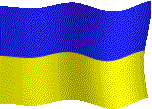 |
UKRAINE
UKRAINA |
Kyiv – First Impressions
KYIV Morning. Birch trees, fish ponds, timeless wooden villages, fields -–we are now in the fertile agricultural country of central Ukraine. The train stopped briefly at a small regional town. The rail tracks were full of peasants selling their produce. Water ? Pail of apples ? A live chicken, or do you prefer a pet cat ? I didn’t get anything but wise Alexei had gotten a pack of pilmyeni, or Siberian dumplings. It must have cost fifty cents or so, and took two of us to finish.We reached Kyiv, or Kiev in Russian – politically incorrect in new Ukraine, at 12:40 afternoon, and I bid farewell to my great friends. The friend of somebody I knew on the internet picked me up at the rail station and helped me to locate a hotel. Great favour ? Fat hope. There is no free lunch in this world ! But what does make me unhappy are those who do not make known the cost of services upfront. Of course, once the damage has been done, no recommendations from me.
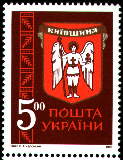 Stamp depicting the arms of Kyiv
Stamp depicting the arms of Kyiv
Whatever the case, Hotel Express is a great place to stay in Kyiv. At US$60, it was above my normal shoestring budget, but quite value for money - central location – near the train station - and the room is very comfortable. Not the kind of luxury I normally spurge for. And I spent one hour - way too long - catching up on BBC News on the TV ! Yes, Damn the Indonesian Military for the atrocities in East Timor ! Jakarta Chinatown 1998 Aceh 1999 East Timor 1999. Bloody Fascists !
I took a bath and began exploring the city. My first impressions of Kyiv were great - beautiful streets, amazing golden domes and cupolas, lots of youthful beautiful people, so much greenery. It’s a beautiful city, and yet so few tourists have gone there.
Near to my hotel is St Volodymir Cathedral (or St Vladimir's in Russian).
I was to walk past it every time I go anywhere from my hotel. It's
also the Mother Church of the Ukrainian Orthodox Church and the amazing
frescoes there are great works of art. The main theme here, as well
as many Kyivan churches, is that of the baptism of Vladimir, Prince of
Kyiv, and of Vladimir’s baptism of the people of Kyiv and Rus, thus bringing
the ancestors of the Russian, Ukrainian and Belarusians into the fold of
Orthodox Christianity.
Here I met a Japanese backpacker who had travelled across Siberia on his way to Western Europe. He had arrived without any guidebook and had no idea where to stay. I lent him my Lonely Planet guidebook, which in any case was hopelessly out-of-date. “Accommodation in Ukraine is expensive,” he commented. I agree.
This is a country where capitalism hasn’t quite arrived, and the state
doesn’t understand tourism. As in other parts of the FSU, foreigners
are charged an amazing amount of money for substandard facilities and services.
To start with, entry requirements are complicated, requiring massive paperwork
– including that ridiculous letter of invitation requirement that simply
allows companies and individuals to profit without providing any service
- and bureaucratic hassle, thus discouraging all but the most persistent
of travellers. Once the tourist enters the country, he has to deal
with strange rules like the need for registration – which provide the bureaucracy
to profit further or to demand for bribes if the visitor doesn’t comply
– and for Ukrainian travel insurance (foreign insurers not allowed), which
simply allows the state insurance company to profit without providing any
service, which they in any case are not likely to fulfill. Plus paying
hotel and attraction entrance fees that are way above what locals pay.
In addition, tourists frequently face spot checks of their documentation,
probably every other police officer sees that as an opportunity to collect
some bribes from unsuspecting visitors who might have broken one or other
of the thousand and one rules pertaining to tourists. What a wonderful
way of discouraging that evil industry called tourism.
Mother of Rus
Kyiv always have a special place in the heart of the Russian, Ukrainian
and Belarusian peoples. This was where the first major Rus empire
was formed, by guess who – the Vikings, or rather, as FSU historians asserted,
Slavicised Vikings, also known as Varangians. Since the 6th century
AD, the Vikings have been navigating the great rivers of Russia and Ukraine,
making their way down to the Black Sea and Constantinople. They traded
with local Slavic tribes, settled in some market areas and intermarried
with local Slavs. In 862, the first Rus state was formed in Novgorod
by the Viking, Rurik of Jutland. His successor, Oleg, founded Kyiv,
while Oleg’s successor, Svyatoslav, expanded Kyiv’s boundaries from the
Baltic in the north to the Black Sea in the south, from the Danube in the
west to the Volga in the east. This was the very first empire of
the Rus, with Kyiv as the capital. Hence, the Mother City of Rus.
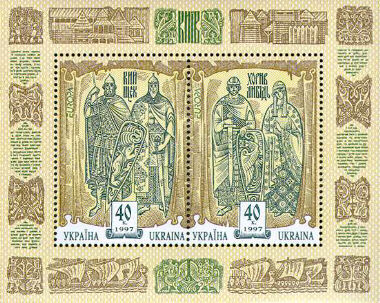 |
 |
 |
|
|
|
|
Valdimir brought Kyivan glory further by marrying a Byzantine princess and converting the Rus to Orthodox Christianity. With that came Byzantine art, philosophy, political ideas and all the grandeur of an imperial system. Yaroslavl the Wise turned Kyiv into the new Jerusalem of the Rus, promoted trade and built grand palaces and cathedrals. All these came to an end when central authority fell apart and rival principalities rose. In 1169, the prince of Suzdal in the north sacked Kyiv, and in 1240, the city was devastated by invading Mongols. The grand old city of 400 churches barely had 200 houses standing in the succeeding years.
The disintegration of the Kyivan Rus, together with the division of the land by foreign invaders such as the Mongols, Polish-Lithuanians and the Swedes, led to the separate development of the Rus peoples. Those who came under Polish rule became the Belarusians and Ukrainians, while the rest, protected by the deep forests and harsh winters, became Russians, with their heartbeat radiating towards that emerging city state that came to be known as Muscovy, or Moscow – The Third Rome to the Orthodox Christians.
From the heartland of an empire, what is today Ukraine became a frontier land. The western part came under Polish rule, where peasants toiled the land as serfs for Polish-Lithuanian nobles. In Crimea in the south, the Tatars, remnants of the Mongol empire, held sway with regular raids to lands of the emerging Russian state. The land in between simply became known as the Ukraine, or the Borderland. More nationalistic Ukrainians resent the use of “the Ukraine”, for it implies that their nation is a mere frontier of Russia. So one has to be careful when speaking to an Ukrainian. Say “Ukraine” rather than “the Ukraine”.
As a wild frontier land, the Ukrainian steppes became a refuge for the
landless farmers escaping from oppressive serfdom in Russia and the Polish
Commonwealth, for slaves seeking refuge from the equally oppressive Crimean
Khanate, as well as fugitives and adventurers from everywhere. These
mismatches and pariahs formed military tribes of freemen known as the Cossacks,
or Kazaks in the Russian language (different from the Turkic Kazhaks of
Central Asia, nowadays also spelled Kazaks in English), meaning outlaw
or freemen. These bands elect their military chiefs, known as hetmans.
The famous group of Cossacks were those of Zaporizky Sich, sometimes known
simply as the Sich. Another group was found in the Don region of
southern Russia – the legendary Don Cossacks who helped secured Russia’s
frontiers on the Caucasus.
The Cossack fought to preserve their independence from the surrounding
powerful states – Poland, Russia and the Tatars/Turks, and often played
off one party against another. Their greatest leader, Hetman Bohdan
Khmelnytsky, concluded an alliance with Russia in order to beat the Poles.
This alliance with the devil, as some called it, made Khmelnytsky a most
controversial figure, for it brought Ukraine into the Russian fold.
Successive wars led to the Polish retreat from Ukraine (and ultimately
the dismemberment of Poland itself), to the benefit of Russia (Prussians
and Austrians as well), and the Cossacks felt increasingly threatened by
the rising Russia. Hetman Ivan Mazepa, in a drastic reversal of allegiance,
switched his support to the invading Swedes, but was beaten by Peter the
Great, who punished the Cossacks by curtailing their independence.
The final chopping block came in 1775 when Catherine the Great disarmed
and disbanded the Sich. From then on, the Cossacks have become merely
the instrument of the Tsars, spearheading expansion into the Caucasus,
Siberia and Central Asia, and even getting involved in the infamous anti-Semitic
pogroms of the 19th century.
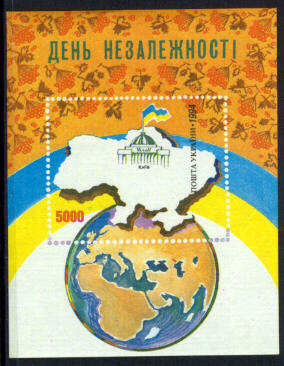 Stamp commemorating the independence of Ukraine in 1991
Stamp commemorating the independence of Ukraine in 1991
Stalin’s collectivisation campaign led to the Great Famine in which
seven million died. The elite of the nation was wiped out by his
Great Purge. The soon-to-follow WWII led to the devastation of the
country and even more deaths, but at the end of the war, Ukraine was reunited.
Massive investment turned Ukraine into USSR’s economic powerhouse.
But nationalism remained strong in western Ukraine which was incorporated
into the USSR only after WWII. Perestroika brought new hopes and
the failed coup d’etat in 1991 united the communist elite with the nationalists.
On 24 August 1991, the Ukrainian Parliament, known as the Supreme Rada,
declared Ukraine independent. After centuries of struggle, Ukraine
came into being as an independent state. The martyrs of Ukraine had
not died in vain. No wonder the national motto is “Ukraine has not
yet died.” Indeed.
Of Poets and Golden Cupolas
I decided to walk around the city centre before night-fall. Shevchenko
Park is nearby. Named after Ukraine’s national poet-writer, a huge
statue of the Bard stood, complete with his distinctive Cossack moustache.
Born a serf, he had a hard childhood and joined the household of a landlord-soldier
as a servant boy. His talent for painting was spotted when he followed
his master to St Petersburg. Disgusted that such a talent should
slave as a serf, renowned artist Bryullov bought his freedom for 2,500
roubles. He began to write and became famous with his first major
work, Kozbar, a collection of Ukrainian poems. With that, he promoted
the revival of Ukrainian as a people’s language, rather than languishing
as a doomed peasant’s tongue. Unfortunately, he was tainted by association
to a group of Ukrainian revolutionaries, arrested and sent on a ten-year
exile. He only returned in 1857, released on the condition that he
“behaved” himself. He visited Ukraine again in 1859, was arrested
and sent back to St Petersburg. Within months, he developed dropsy
and died, securing his place in the Ukrainian pantheon of heroes.
Today, in every Ukrainian city and town, there is a street named after
him, and everyone from school children to the elderly can recite his works.
In his death, Shevchenko has become a kind of Ukrainian god, an icon of
its independence and glorious heroes.
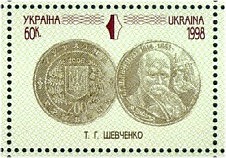 |
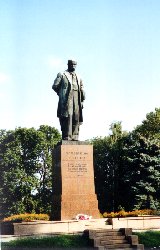 |
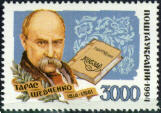 |
|
|
|
|
I popped by the Golden Gate, supposedly an exact replica of the famous gate built during the days of the Kyivan Rus. It looked grand in pictures but I found a sorry structure closely enclosed by more modern structures. It looked more like an oversized gorilla in a cage, instead of a golden phoenix rising from ashes.
Kyiv is a city of golden domes and cupolas. I walked past the
famous St Sophia Cathedral – an UNESCO World Heritage site - but decided
to visit it another day. At one end of Sofiyska Square is the equestrian
statue of Hetman Bohdan Khmelnytsky, and beyond that the seven magnificent
golden domes of St Michael’s Monastery of the Golden Cupolas (known as
Mykhailivsky Zolotoverkhyi in Ukrainian) beckons. This grandiose
structure, with its amazing golden domes and cupolas shining in the afternoon
sun, was built in 1108. In 1934, Stalin decided to build the headquarters
of the Central Committee of the Ukrainian Communist Party here and ordered
the cathedral destroyed. Many historians were horrified by the move
but could only save some of the frescoes and icons. Only one, Mykola
Makarenko, refused to sign a statement supporting the demolition of the
cathedral. He paid for the brave decision with his life – Like the
millions who disagreed with Stalin, he was arrested and executed.
The communist structure was never built, some say, by act of providential
displeasure. With independence, the Ukrainian government has since
rebuilt the structure. Renovations were still ongoing when I visited,
but the golden domes already filled visitors like me with great awe and
amazement.
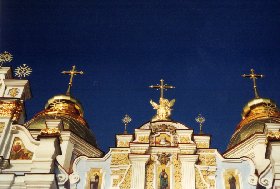 |
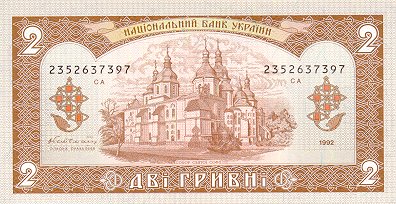 |
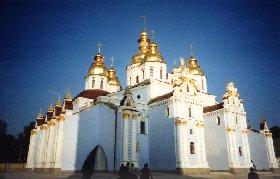 |
|
|
|
|
In the Mykhailivsky Square is the monument to Princess Olga, one of the first Christians of the Rus; St Andrew the First-Call, another great apostle to the Kyvian Rus; and Brothers St Cyril and St Methodius, creators of the Cyrillic alphabet and preachers to the Slavs. This monument, too, was destroyed during Stalin’s drives to eliminate Ukrainian history and identity, and was only rebuilt in recent years.
| RETURN TO FROM THE BALTIC TO THE BLACK SEA HOMEPAGE |